Alphabet Recognition Cursive Letters Worksheets for Ages 7-8
7 filtered results
-
From - To
Enhance your child's handwriting with our Alphabet Recognition Cursive Letters Worksheets for ages 7-8. These carefully designed worksheets combine fun and learning to help young students master cursive writing. Each sheet focuses on a different letter, offering tracing and independent writing practice to reinforce recognition and proper formation. This essential skill not only improves fine motor abilities but also boosts confidence in their writing capabilities. Ideal for classroom and home use, our worksheets provide a structured approach to mastering the cursive alphabet, preparing kids for advanced writing tasks. Start your child's handwriting journey with our expert-crafted resources today!
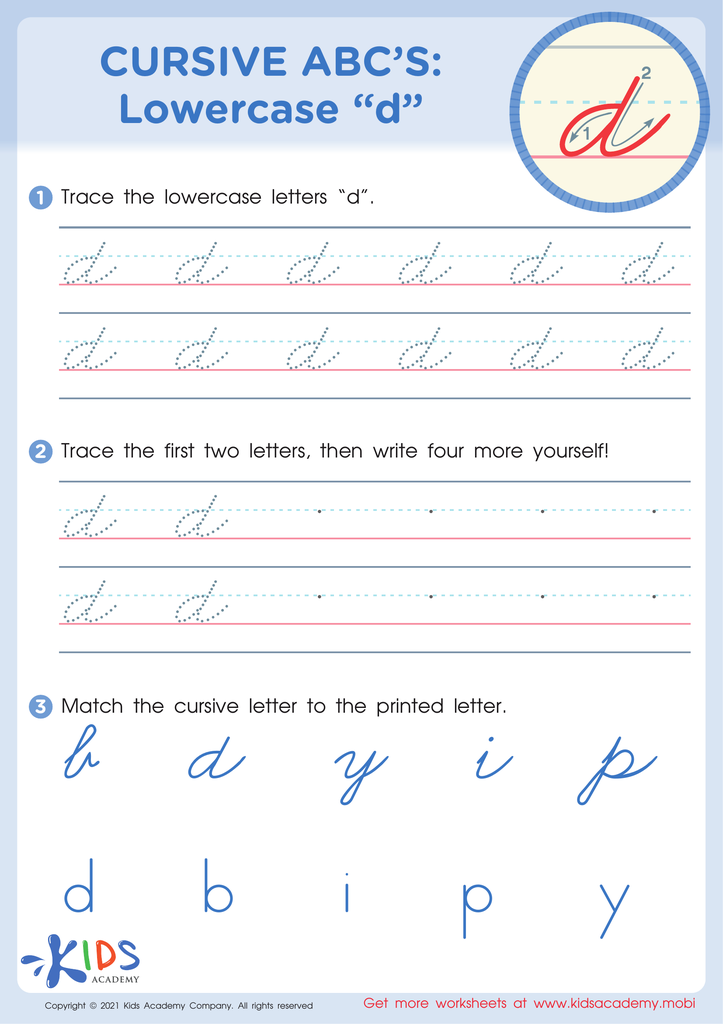

Cursive ABCs: Lowercase d
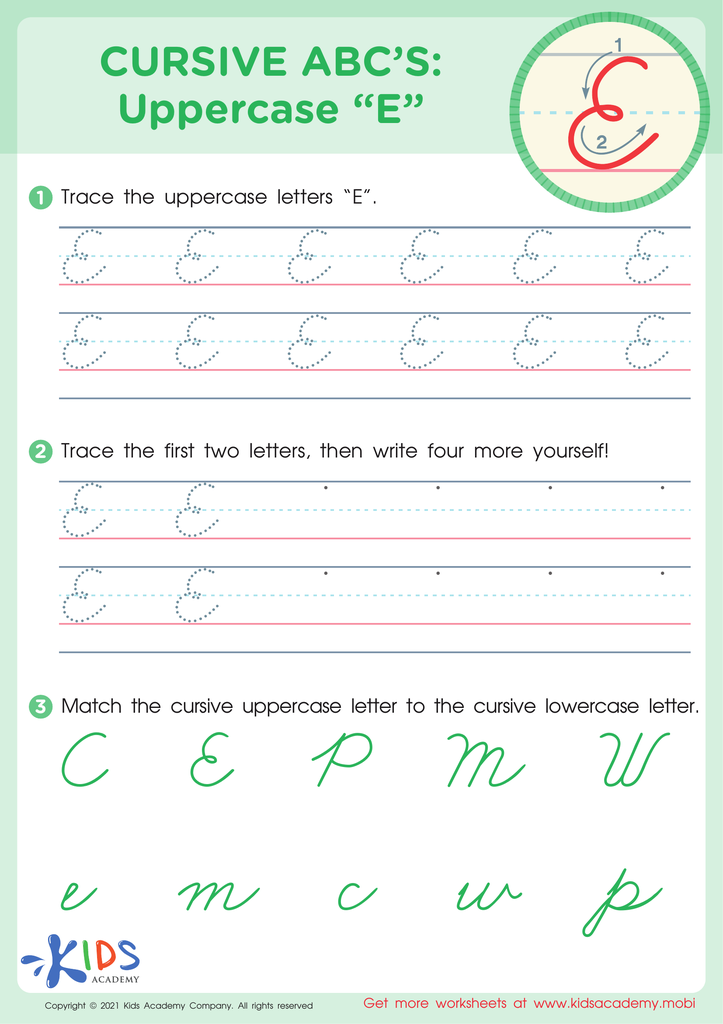

Cursive ABCs: Uppercase E
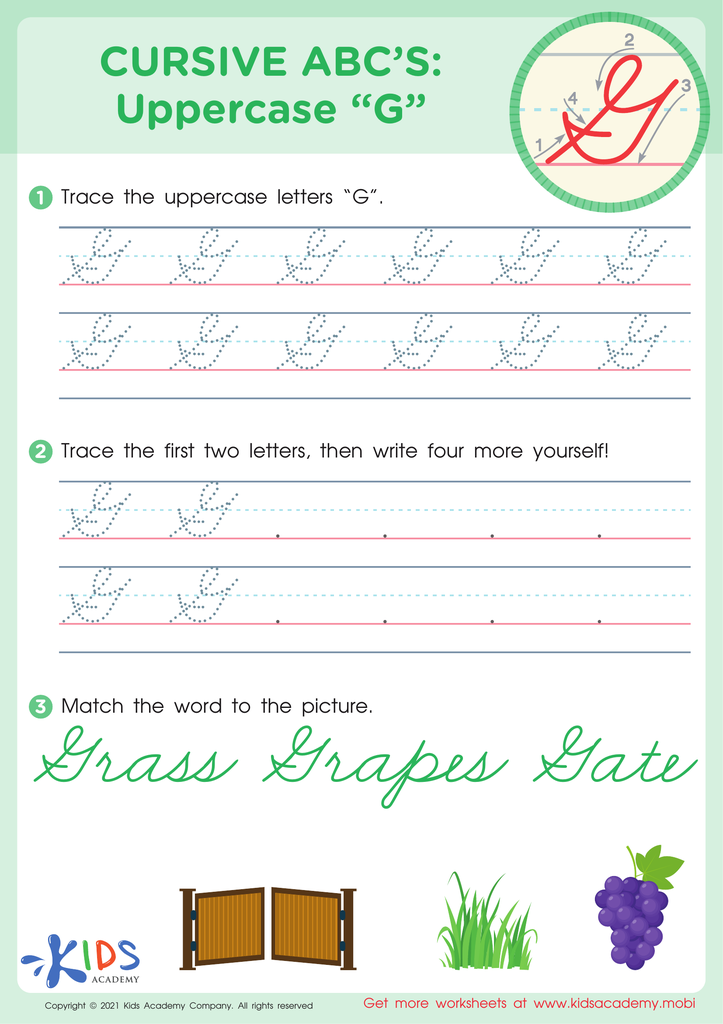

Cursive ABCs: Uppercase G
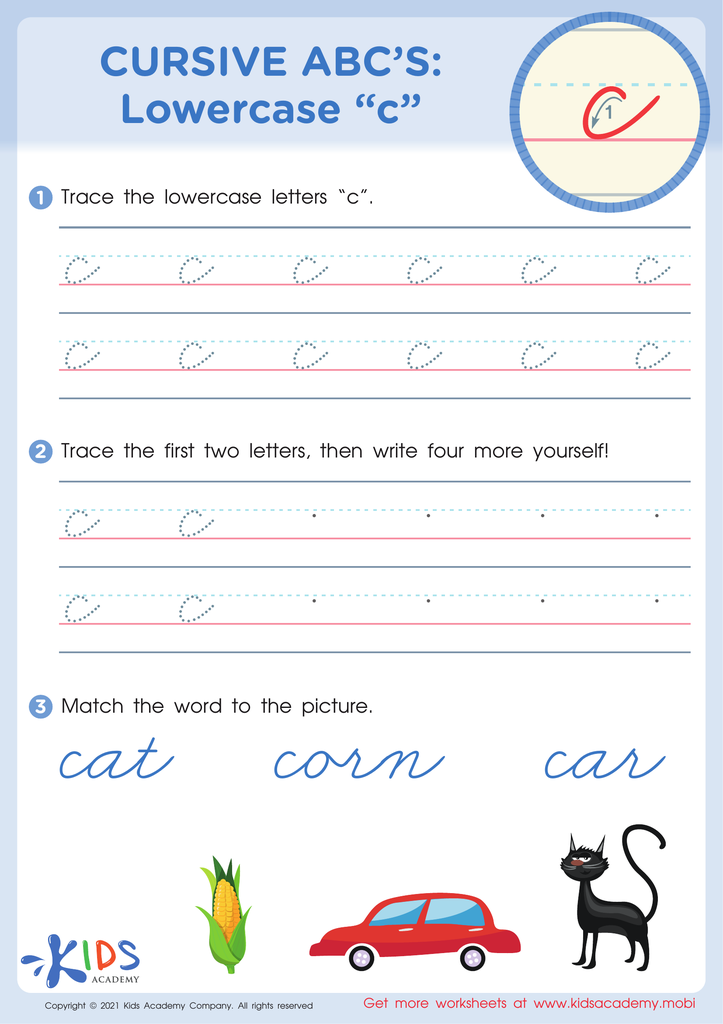

Cursive ABCs: Lowercase c
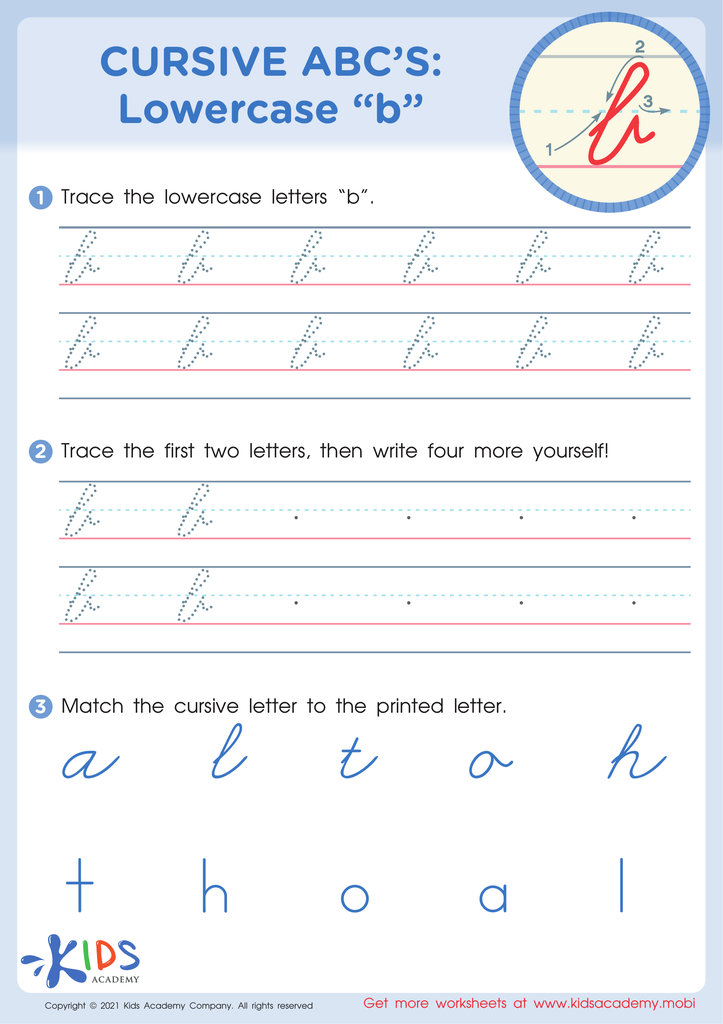

Cursive ABCs: Lowercase b


Cursive ABCs: Uppercase A
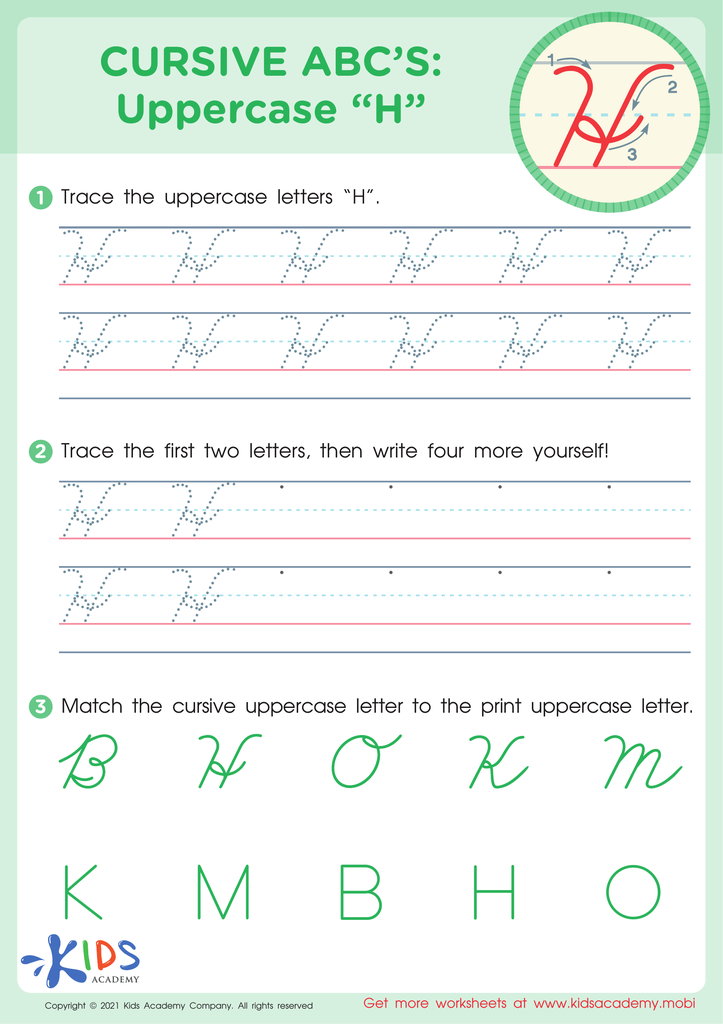

Cursive ABCs: Uppercase H
Alphabet recognition in cursive letters is vital for children aged 7-8 because it builds essential literacy skills that will serve them throughout their academic and professional lives. At this developmental stage, children are transitioning from print to more fluid, joined-up handwriting, which can enhance fine motor skills, reading fluency, and cognitive development.
Firstly, understanding cursive writing enhances children's writing speed and legibility, making it easier for them to take notes and complete assignments efficiently. This can lead to improved performance in school, as they can transcribe their thoughts more quickly and legibly.
Secondly, cursive writing helps with reading development. When children learn cursive, they also practice connecting letters in new ways, which can boost their ability to recognize words quickly and accurately, therefore enhancing reading fluency. In turn, faster reading fluency fosters better comprehension and more enjoyment of reading.
Moreover, mastering cursive writing encourages cognitive development by requiring children to concentrate, develop fine motor control, and practice recalling letter shapes and structures. This additional mental challenge promotes better problem-solving skills and attention to detail.
Parents and teachers need to support alphabet recognition in cursive to ensure that children develop these critical skills at an appropriate age, setting a strong foundation for future learning and personal growth.



















